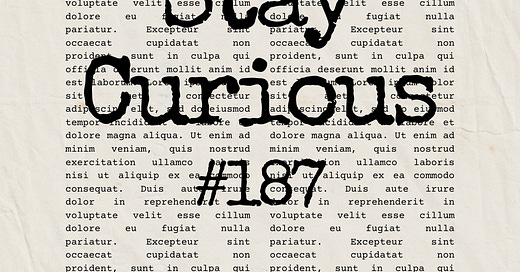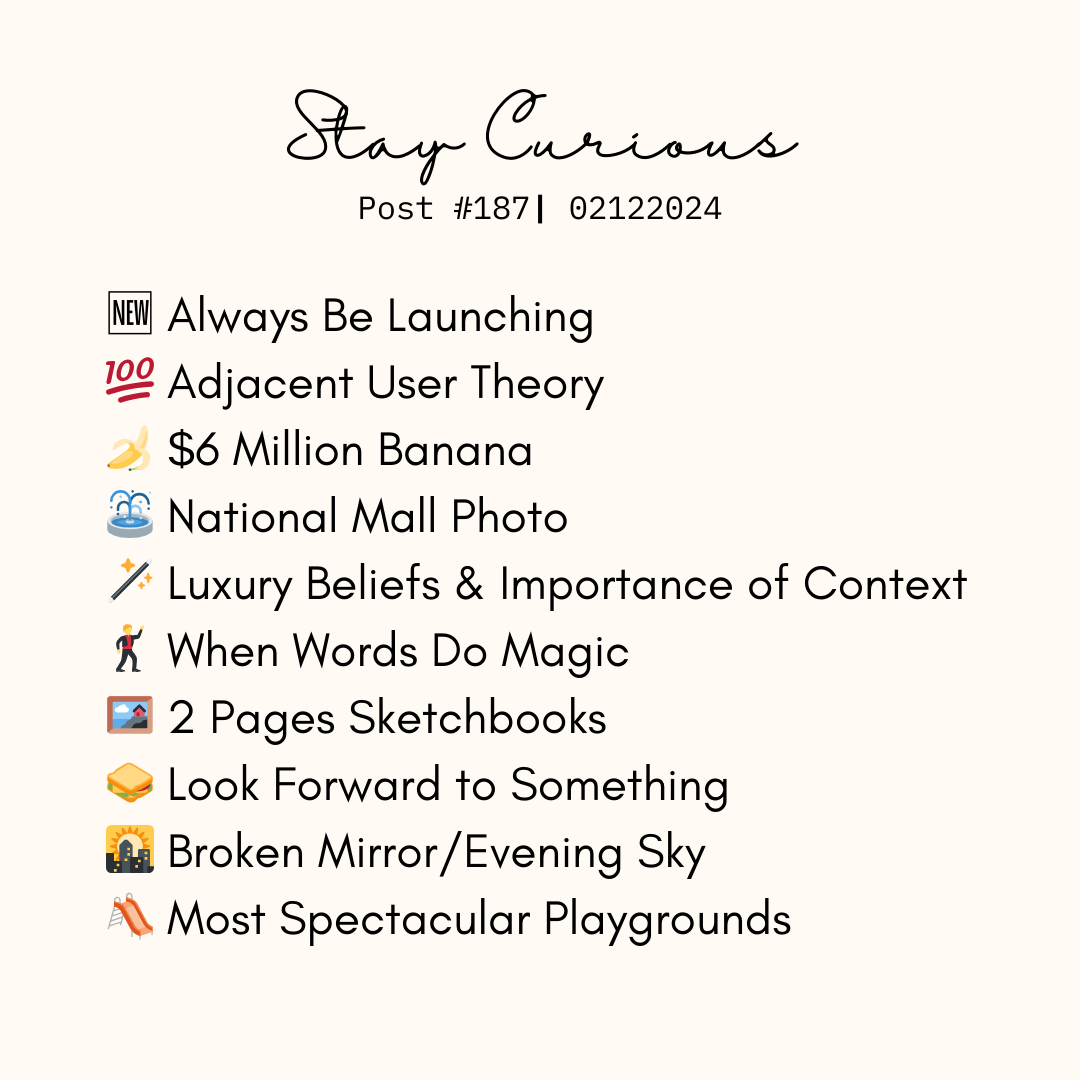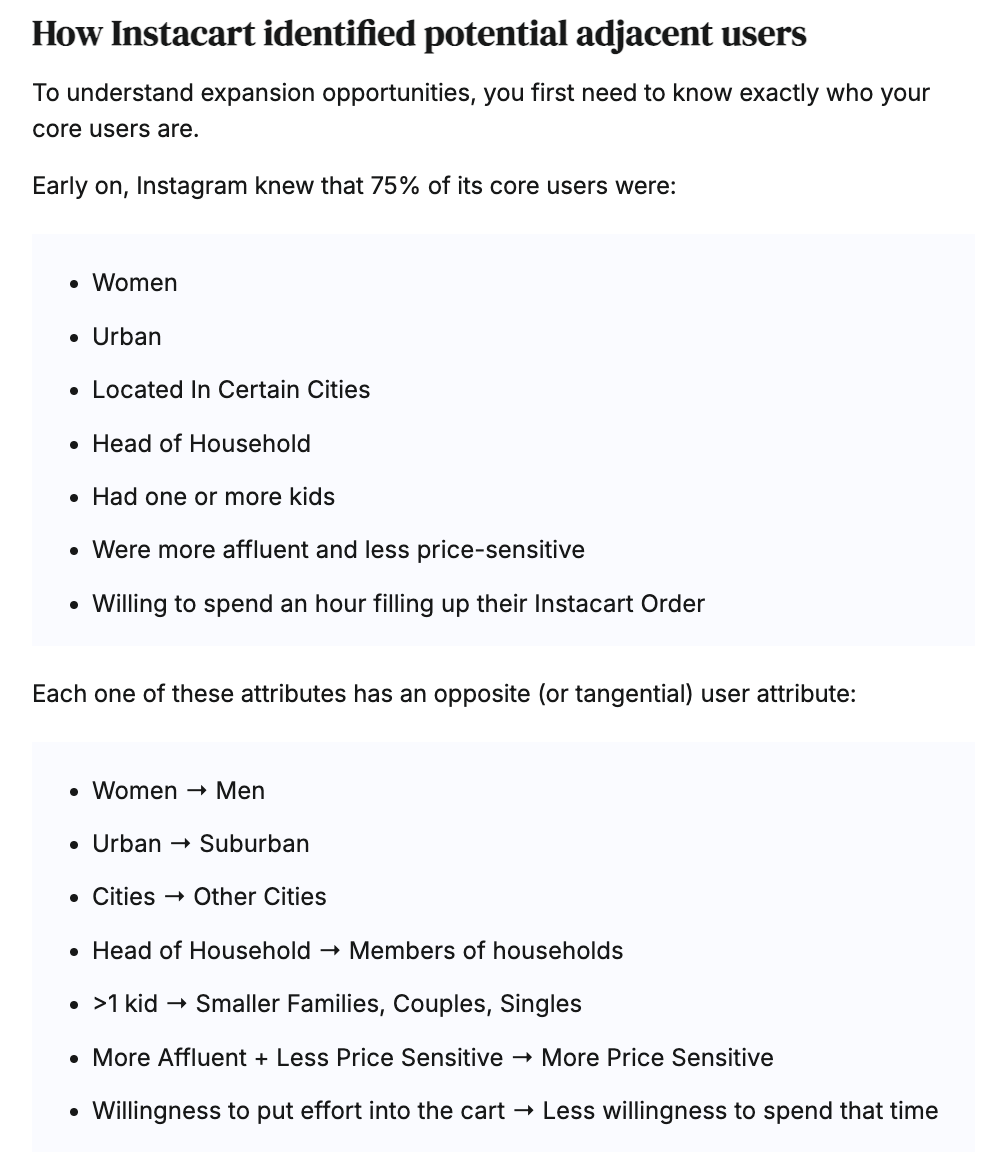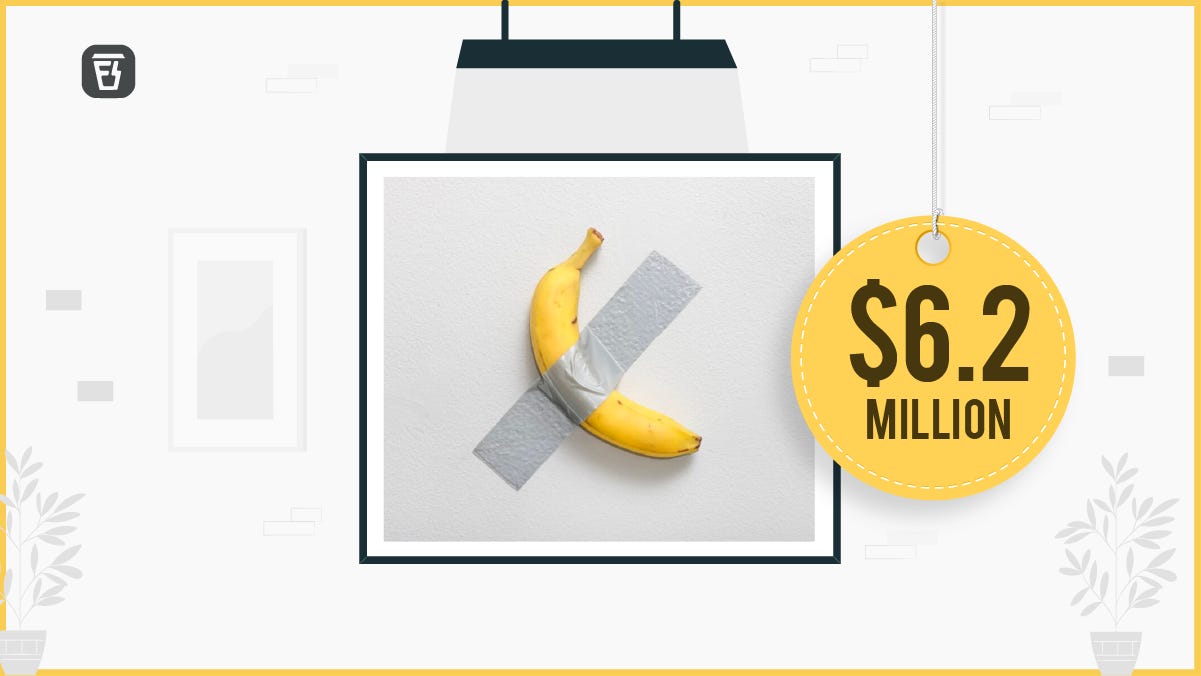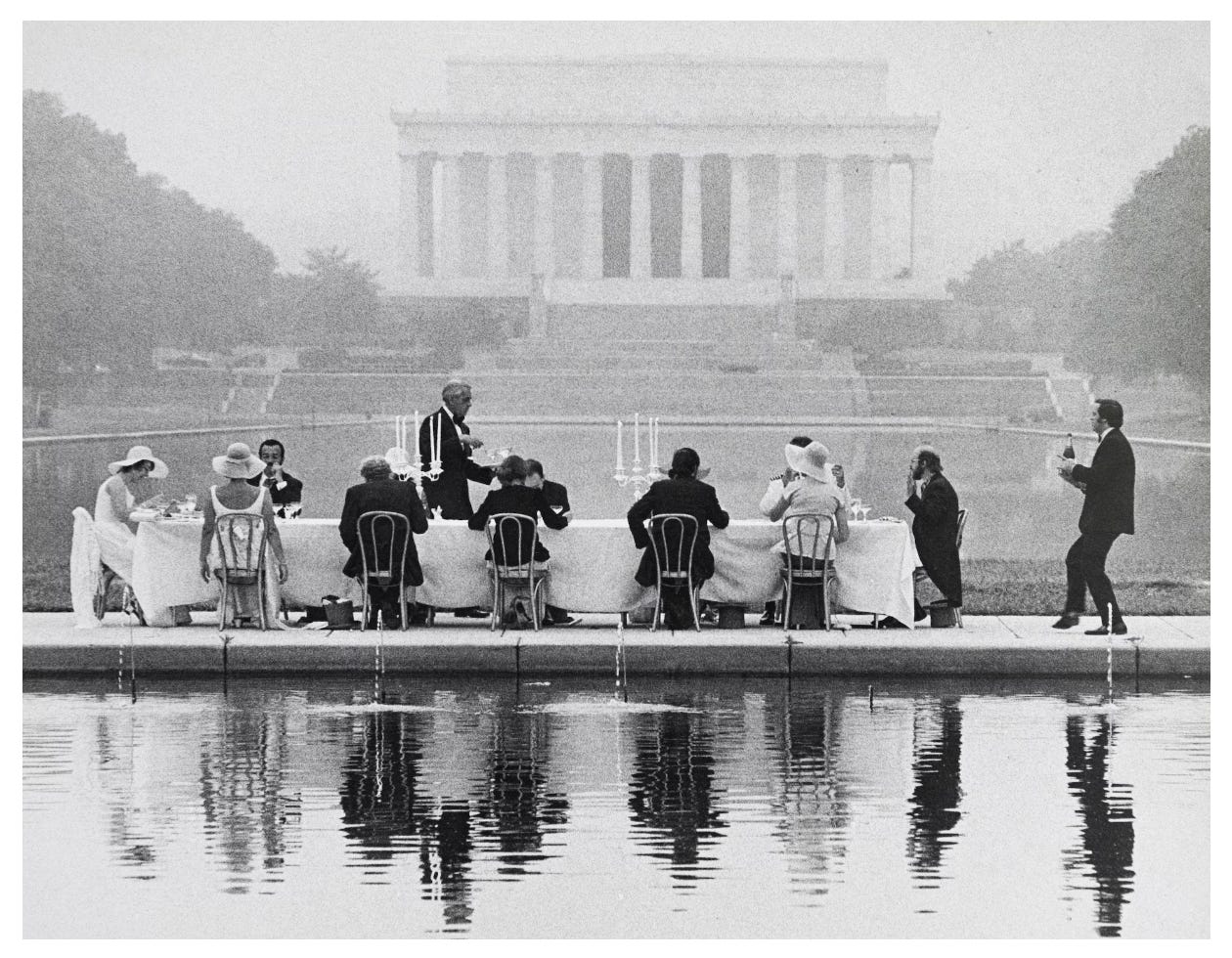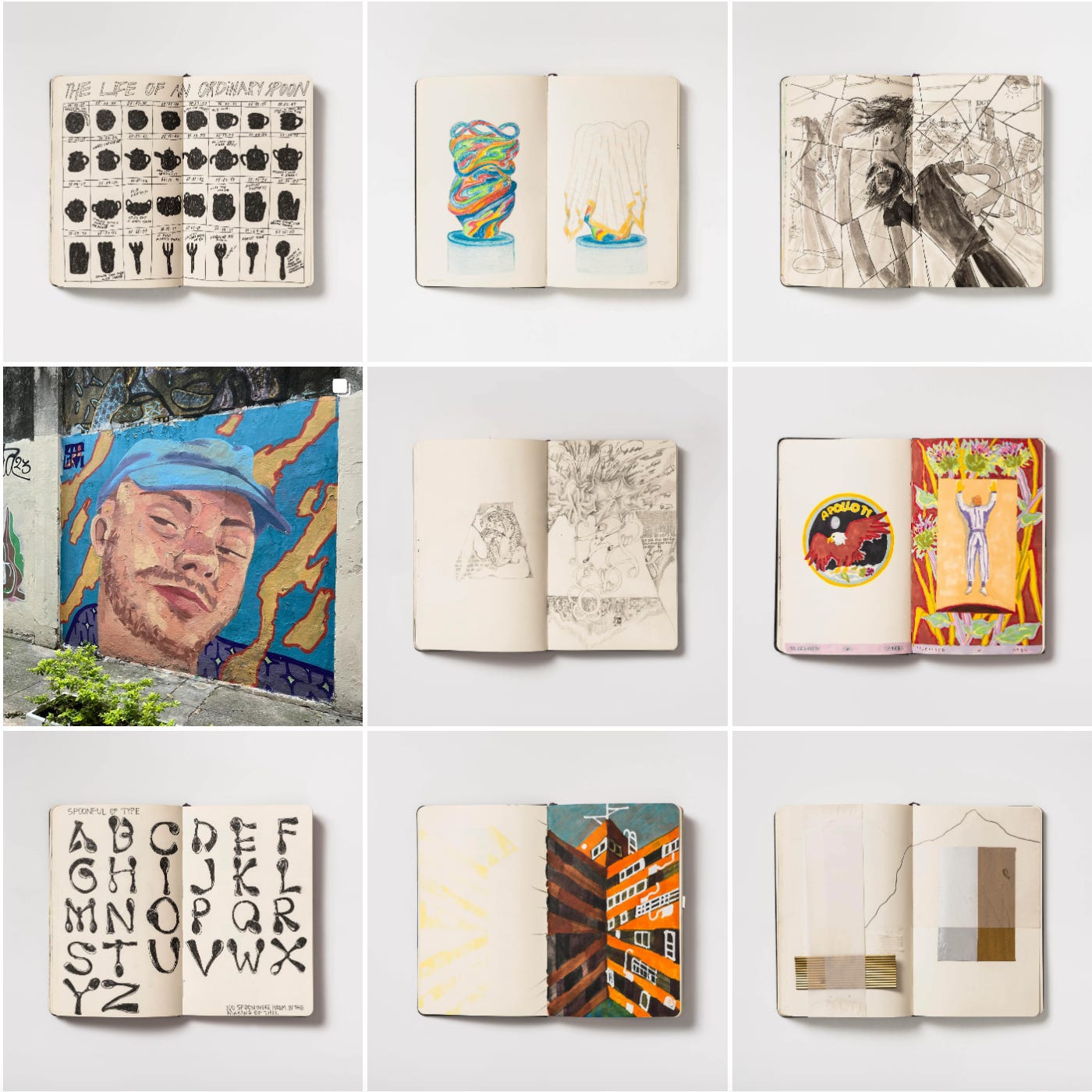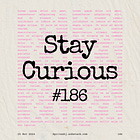📚 Always be launching, Adjacent users, $6 Million banana, Luxury Beliefs, 2 Page sketchbooks
National mall photo, Magic of words, Look forward to something, Broken mirror / evening sky and more.
Hello, this is post #187.
Winter has arrived! The sun’s been hiding, and I’m running low on energy—like my internal batteries aren’t charging properly. Laziness has crept in, and I’ve avoided anything too serious or demanding. My week has mostly been about restarting Mad Men and rewatching episodes of The Big Bang Theory. Not much else has changed. Am I proud of it? Not really. But I’m also not beating myself up. Right now, I’m okay to slow down and just enjoy the pause.
Here’s what I found interesting and worth sharing this week:
Exciting, isn’t it? Let’s check these out…
🆕 Always Be Launching
Andrew Chen argues that product builders in this social media age should always be launching.
Instead of a Big Bang Launch — a single spike of attention — we have Always Be Launching, the idea that what you need is nonstop/constant talk about your product, its capabilities, case studies, and achievements. You don’t “save up” info for announcements, you just go.
Chen breaks down the key ideas behind this approach, offering practical tips to guide your daily actions and keep momentum. If you’re wondering why the old-school “Big Bang Launch” model doesn’t hold up, he briefly outlines its downsides too.
Here’s a key insight that highlights a real challenge many builders face with the ‘always be launching’ approach—and how to tackle it.
The biggest psychological barrier is to ask founders to talk more. To write down what they're excited about, about their milestones, and to join the dialog. It's difficult because -- in the fog of war that is startup life -- it's hard to know how to be right. But it's part of the fun to lower the bar. Say one thing one day, and then do a writeup about why you're wrong the next. Launch a product, then share the metrics, but then talk about all the bugs and problems. It's the unvarnished view that gathers supporters.
💯 Adjacent User Theory
In a recent post from Demand Curve, Neal explained the Adjacent user theory. Here’re the definition for the context:
Core Users are those for whom the product is initially built and who understand and engage with its core value without much modification or onboarding friction. These users align directly with the product's initial design and purpose.
Adjacent Users are people interested in or could benefit from the product but don’t align perfectly with its current form or messaging. They may need a slight change in positioning, feature tweaks, or lower barriers to engage fully.
We often pour our energy into core users—especially the power users who interact with a product the most. But adjacent users? They barely get noticed. They're usually part of small experiments or minor tweaks, not seen as a real source of growth.
Neal highlights a brilliant post by Bangaly Kaba, that dives deeper into this idea. It’s a must-read for any growth manager looking to explore untapped potential and expand their strategy.
Here’s a key takeaway from both articles: how do you spot potential adjacent users?
Each of those can be a potential adjacent user to your core users. A good way to think, isn’t it?
🍌 $6 Million Banana
Unless you’ve been living under a rock, you’ve probably heard about the $6 million banana. But, as always, the folks at Finshots didn’t just stop at reporting the news. They used it as a springboard to explore something deeper: why art often fetches millions—or even billions—of dollars.
Here’s one take on the banana situation:
Well, if you look at it from the lens of Justin Sun, the buyer of the $6 million “duct-taped banana” and founder of the cryptocurrency Tron, this wasn’t just art. It was an idea. For him the banana apparently represented the connection between art, meme culture and the crypto community. It’s what’s called conceptual art, meant to challenge how we think about value.
The banana might show how value isn’t fixed but shaped by culture. And since memes highlight the absurdities of modern life, linking them with art makes it relatable to younger, tech-savvy folks. For the crypto crowd, it’s a way to show how something unusual and intangible, like Bitcoin or even Tron, can hold incredible value.
But that’s not all. The rise of meme and hype-driven value creation (and eventual destruction) is probably a new trend. But art has been part of many other games far longer—and on much deeper levels. One fascinating angle? Art’s long-standing use as a tool for money laundering. This unexpected twist added a whole new layer to the post, making it even more compelling.
And they have saved the best for the last. This art piece itself—Comedian – has a fascinating story going back at least five years. The backstory is the real gem here, perfectly saved for the finale. Trust me, it’s worth a read—you’ll walk away surprised and thoroughly entertained!
⛲ National Mall Photo
Five decades ago, a dozen friends gathered here, on the National Mall, for breakfast. They wore morning coats and floor-length dresses, dined on oysters, drank champagne and danced together as a string quartet played in the shadow of the Lincoln Memorial.
The extravagant scene on July 19, 1974, drew in a Washington Post photographer, who captured the moment in an image that would ricochet around the country in newspaper reprints.
Here’s the photo…
But the people and circumstances at the center of that famous picture remained a mystery to those who admired it, bought it, hung it on their office walls. They didn’t know who those young people were or why they had gathered for such an ornate affair near the Reflecting Pool. They didn’t know that the specter of death had loomed over the rousing celebration or that the people at its center would go on to have a hand in many pivotal facets of American life — the civil rights movement, gender equity in schools, advocacy for blind and disabled people.
That is until Joyce Naltchayan Boghosian — the daughter of late Post photographer Harry Naltchayan, who captured the original image — met one of the participants a year ago and began to put the pieces together.
What a fantastic read! I felt so many emotions, a joy that’s difficult to describe. If you can read only one thing from today’s post, let this be the one.
Here’s the link to the post: The real story behind the National Mall Photo.
(via Now I Know)
🪄 Luxury Beliefs & Importance of Context
Why western designs fail in developing countries takes a hard look at how designs that ignore local context often fall short of making a real impact. It covers examples like incubators made from car parts, the PlayPump, mosquito nets repurposed for fishing, and the $100 laptop from the One Laptop per Child initiative.
While there might be counterexamples to each of these failed projects, the central takeaway stands strong: understanding the impact of context is crucial for any design effort. It’s a reminder that good design isn’t just about innovation—it’s about relevance and adaptability.
Lila Krishna’s “Interrogating luxury beliefs” touches similar chords in a slightly different context. Here’s how she introduces the topic:
I’ve come across the term “Luxury beliefs” on social media kind of a lot. It refers to beliefs that the wealthy and powerful hold that are fashionable for them and don’t affect them, but adopting those beliefs hurts less-privileged people.
It’s stuff like “all drugs should be legalized” or “defund the police” which will disproportionately affect poorer people when seen to its logical end. It’s also stuff like “It’s just luck that led me to be successful” or “Marriage is outdated”. These beliefs are mostly held by people who work their ass off to get to where they are, and are raised by married parents, and plan to get married before having kids. When they are internalized by those with worse life circumstances, though, they tend to keep people stuck or lead to worse outcomes for their kids. Another one is “college isn’t important” by Silicon Valley CEOs who then go on to only hire those from Ivies. So anyone taking their advice seriously ends up much, much worse off.
She offers some thoughtful insights on why this happens and how to protect yourself from it. It’s a deep read, not for everyone, but if you can relate to her examples like I did, it’s definitely worth sticking with. Let me know what you think!
🕺 When Words Do Magic
Some people have a way of capturing beauty—not just in what they observe but in how they write about it. I’m lucky to have a chance to admire their work.
Hands. Sarthak Dev writes how there is more to sports than the drama we see on the screen and our social feeds.
Sport comes to us packaged as theatre. The athletic contest itself is rarely enough; it needs its subplots. We’re sold heroes and villains, our warriors against their enemies.
The RF logo wears Spanish colours, and “Rafa that!” plays on “Roger that.” But between these touches lies something extraordinary - a champion secure enough to tell his greatest rival that he never really could figure their game out, that he’s glad his children trained at their academy. It’s hard to imagine a higher compliment.
The lachak and matak of Hrithik Roshan. Vikram Shah takes us to that one song ‘Baawre’ in which Hrithik Roshan outdid himself. Vikram’s words will bring Hrithik’s moves alive for you.
‘Effortless’ is a word often used to describe his performances but ‘Baawre’, to me, sweats and steams with honest work. He doesn’t glide across the stage as much as thump it; he doesn’t attract your attention as much as grab it. When he commits to the hook steps after a costume change (top—a bright red sleeveless jacket with gold brocade, bottom—a shimmery dhoti the texture of aluminium foil), he locks his fingers, arches his back and hops on one leg, the vigour conveyed by his bouncing locks. Then, in the next shot, when he shimmies shoulders at the head of a fast-advancing formation, he approaches you, the viewer, with deliberate winks and tilts of the head, before skipping away as the backtracking camera finally halts and pans to Isha and Konkona Sensharma.
🖼️ 2 Pages Sketchbooks
For the past 12 years, Konstantinos Trichas and Dionysis Livanis have been running the inspiring Two-Page Sketchbook Project. Over time, they’ve collected more than 1,000 creative doodles from artists all around the globe. The idea behind it? Simple yet brilliant:
They choose a city and a creative person in that city, and send them a blank sketchbook, with the brief to adorn just two pages of the book around a decided theme. When they’re done, they pass it on. It has some of the allure of Exquisite Corpse – each creative reacts in their individual way, each sketchbook becoming a bridge between different cultures and disciplines, the outcome far more than the sum of its parts.
Sounds exciting, doesn’t it? I was hooked the moment I heard about it and couldn’t resist diving into the post. The doodles are extraordinary—each one seems to tell a story of its own. In this interview with It’s Nice That, the creators share the journey and hard work that have kept this project thriving. It’s incredibly inspiring to see such unique ideas brought to life and sustained with passion and persistence. Truly brilliant work!
🥪 Look Forward to Something
Elana Spivack has brilliant advice for all: every day, look forward to a really good sandwich. Whatever is going on right now, give yourself something to look forward to. It doesn’t have to be big.
She writes:
Personally, when I need something to look forward to, my favorite thing to stick in my schedule is getting a really good sandwich. Usually a deli sandwich on quality bread that’s impractical to keep at home and fresh ingredients that had I combined them myself just wouldn’t taste as good.
But truly anything can be the sandwich. Grabbing coffee. Having tea and a cookie every night before bed. Sometimes, I’ll just go through what I already have planned and think about what good things I have coming up that I can focus on.
I care a lot about ‘Little Moments of Joy’. This sandwich metaphor give me one more good way to bring joy to everyday life. Is there anything that you look forward to everyday?
And speaking of sandwiches, I am looking for recommendations of good sandwich places in Bangalore. Not the Cool Joint types, but like what Chetna Makan makes & eats in her “Between The Slices” series. So yummy!
✨ Everything else
Bing Wright who captured the reflections of sunsets on shattered mirrors. This collection is aptly titled Broken Mirror/Evening Sky. Such beauty!
Talking of colorful sights, Mikael Hallstrøm Eriksen creates elaborate layered color gradients in watercolor. I cannot believe that they are hand drawn.
The Art of Play is a vast compendium featuring a range of interactive, immersive, and conceptual spaces for both children and adults. Grace Ebert picks some of the best ones from the book. Here’s your chance to take a sneak peek of some of the most spectacular artist-designed playgrounds. I want to be a kid again!


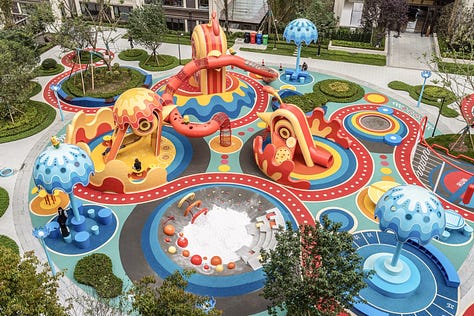
Finally ICYMI, I had a couple of book recommendations that will resonate with the festive & travel mood very well. Check these out and a lot more for your other curiosities…
That's all for this week, folks!
I hope I've earned the privilege of your time.
If you liked this post, please hit the ❤️ below and leave a comment to tell me more. Forward it to a friend who will find it useful, there is no better way to make this world more curious!

